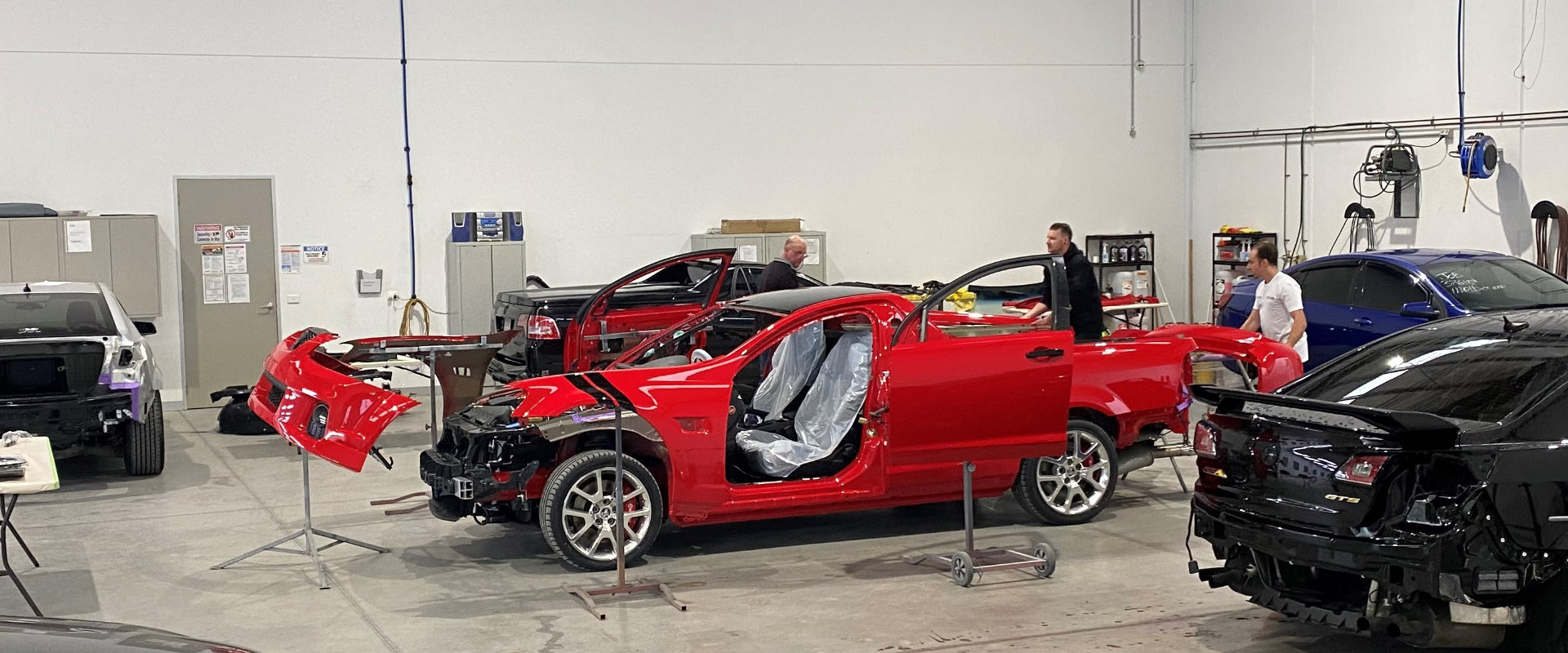General Motors Australia & New Zealand (GM) has published 12 position statements detailing procedures it says are essential for performing “safe and proper repairs”. The company says key points are around fascia repairs, recycled parts usage, and safety system inspections and replacement.
The company also reiterated that GM Genuine Parts for aftersales and repair purposes are available through more than 200 Authorised Holden Certified Service outlets across Australia and more than 50 throughout New Zealand. The company says GM Genuine Parts supplied through the GMANZ supply network in Australia and New Zealand are fully ADR compliant and backed by a factory warranty.
“We strongly urge motorists who are having their car repaired to make an informed decision and insist on using GM Genuine Parts,” said Paul Rietveld, Director Aftersales.
The position statements are detailed – we’ve included parts of them below:
General Motors Position Statement Bumper/Fascia Replacement with Advanced Driver Assistance Systems (ADAS) – GM DOES NOT APPROVE the use of aftermarket, reconditioned, or salvage bumpers/fascias on GM vehicles equipped with ADAS. Aftermarket, reconditioned or salvage bumpers/fascias may have different material specifications than what was designed, tested and validated for use with ADAS.
General Motors Position Statement on the use of Salvage and Recycled Parts in Repairs – GM vehicles, systems and components are engineered, tested and manufactured to protect vehicle occupants based upon both government mandated and internal corporate requirements relative to durability, NVH (noise / vibration / harshness), occupant protection, vehicle safety & ADAS (Advanced Driver Assistance Systems) operation. The overall structural integrity of the vehicle is dependent on its inherent design specifications.
General Motors Position Statement on the reuse of Salvage Structural Parts in Repairs – GM vehicles, systems and components are engineered, tested and manufactured to protect vehicle occupants based upon both government mandated and internal corporate requirements relative to durability, NVH (noise / vibration / harshness), occupant protection, and vehicle safety. The overall structural integrity of the vehicle is dependent on its inherent design specifications.
General Motors Position Statement on the Installation of Used, Salvaged, or Imitation Air Bag System Components – Due to the critical nature of the design of air bag systems, GM does not support the use of any used, salvaged, or imitation parts for repair. Only new, genuine GM warranted parts should be used in repair. Proper operation of the air bag system requires that any repairs to the vehicle be made with new, GM warranted parts. Never use air bag parts from another vehicle or source.
General Motors Position Statement Safety System (incl Seat Belts) Repairs and Inspections Required After a Collision – This document is to be referenced in conjunction with DOC 5807146 Repairs and Inspections Required After a Collision.
DOC 5807146 – Supplemental Restraints 0-1 – Repairs and Inspections Required After a Collision – Warning: Proper operation of the Supplemental Inflatable Restraint (SIR) sensing system requires that any repairs to the vehicle structure return the vehicle structure to the original production configuration. Not properly repairing the vehicle structure could cause non-deployment of the air bag(s) in a frontal collision or deployment of the air bag(s) for conditions less severe than intended.
General Motors Position Statement on the Non-approval of Clipping (Sectioning of Two Vehicles) for Collision Repair – GM does not approve the use of “clipping” to repair collision damage to vehicles. In the collision repair industry, “clipping” refers to cutting two damaged vehicles through the windshield pillars, the rocker panels, and across the floor pan and joining the undamaged portions from these vehicles to make the repair.
General Motors Position Statement on Pre- and Post-Scan of Collision Vehicles – GM takes the position that all vehicles being assessed for collision damage repairs must be tested for Diagnostic Trouble Codes (DTCs) during the repair estimation to identify the required repairs. Additionally, the vehicle must be re-tested after all repairs are complete to verify that the faults have been repaired and new faults have not been introduced during repairs.
General Motors Vehicles Supported by GDS2 or Tech2/Tech2Win – GM states that the method to correctly identify vehicle diagnostic trouble codes (DTCs) is by using the appropriate GM diagnostic software: GDS2 or Tech 2/Tech2Win, each of which can scan a vehicle for all DTCs in one operation.
General Motors Position Statement – Refinishing of Aluminium and Chrome Wheels – This information updates General Motors Australia & New Zealand’s (GMANZ) position on refinishing aluminium and chrome wheels. GMANZ does not endorse any repairs that involve welding, bending, straightening or re-machining.
General Motors Position Statement Wheel Alignment Specifications, Requirements and Recommendations for GM Vehicles – 2021 and prior GM Passenger Cars and Light Duty Trucks – The purpose of this document is to provide a clear position with GM’s recommendations for customer concerns related to wheel alignment. For your convenience, this document updates and centralises all of GM’s Standard Wheel Alignment Service Procedures, and bulletins on wheel alignment service.
Information on Proper Use of Floor Mats – 2021 and Prior GM Passenger Cars and Light Duty Trucks – GM’s carpeted and all-weather (rubber) floor mats are specially designed for use in specific GM vehicles. Using floor mats that were not designed for the specific vehicle or using them incorrectly may cause interference with the accelerator or brake pedal.
Repairers can read the full position statements at www.gmtradeparts.com.au.

